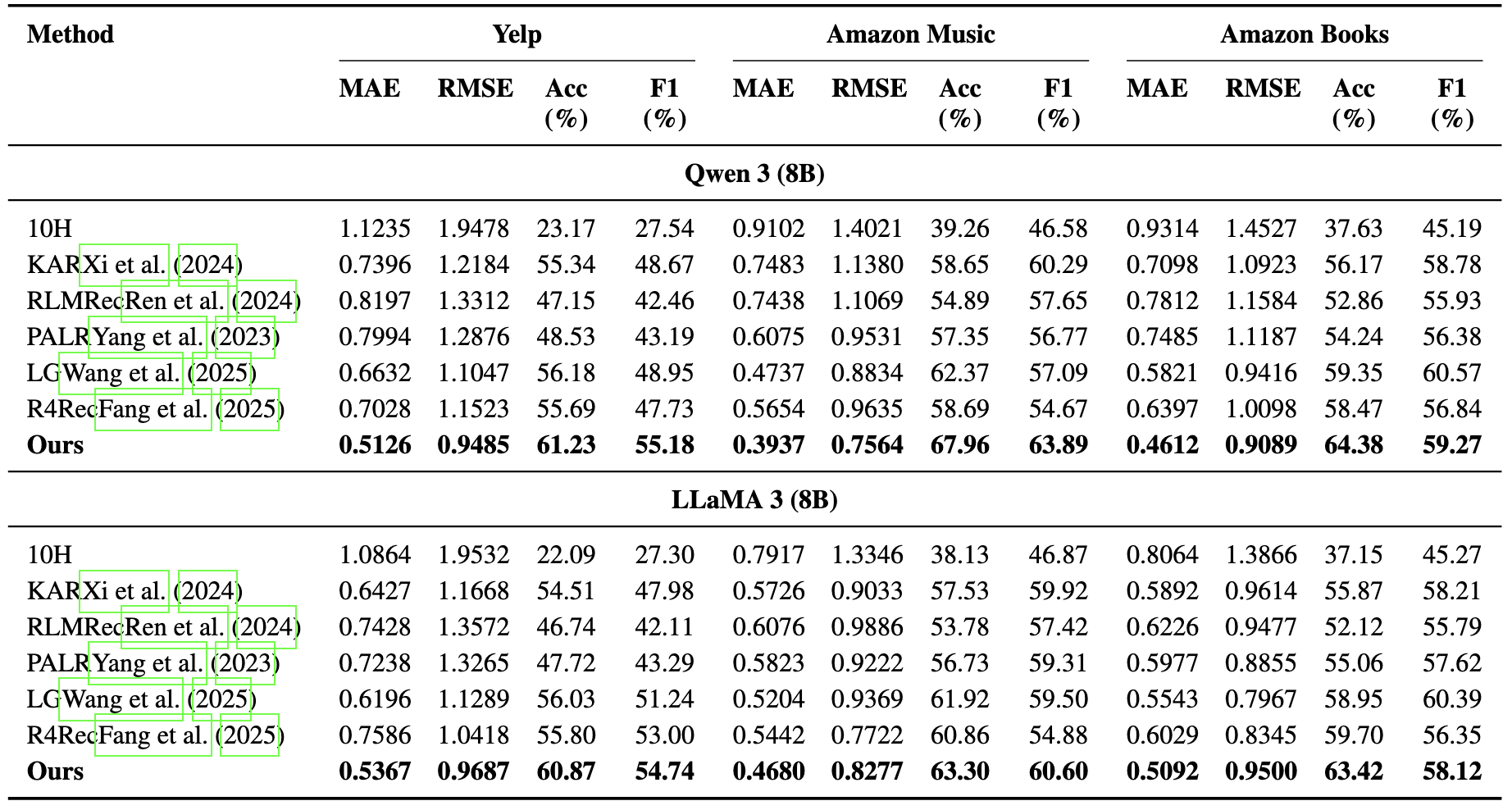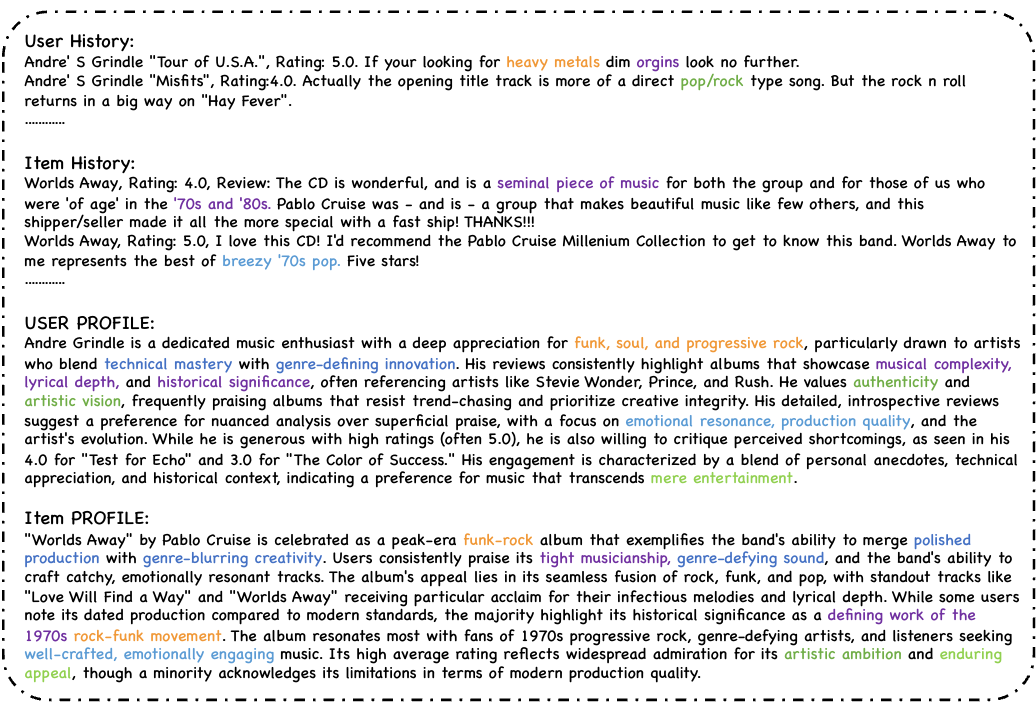Traditional recommendation systems represent users and items as hidden vectors, learning to align them in a shared latent space for relevance estimation. With the advent of large language models (LLMs), we advocate a shift from vectors to text: representing users and items as textual profiles and aligning them in a shared semantic space. Textual profiles are directly compatible with LLMs and offer interpretability for downstream agentic systems.
A key challenge, however, is that the optimal profile format is unknown, and handcrafted templates often misalign with task objectives. We propose DUET, a framework for joint exploration of user–item profile generation in text. The framework operates in three stages: First, raw histories and metadata are distilled into simple cues that capture minimal but informative signals. Second, during a single sequence-to-sequence inference pass, these cues are expanded into richer prompts and then into textual profiles, allowing for the exploration of multiple formats rather than a single creation.
Finally, profiles are optimized jointly via reinforcement learning, where downstream recommendation performance provides feedback to refine and align them. Experiments on three real-world datasets demonstrate that DUET outperforms strong baselines, validating the effectiveness of joint textual profile alignment and the utility of prompt-driven exploration.





